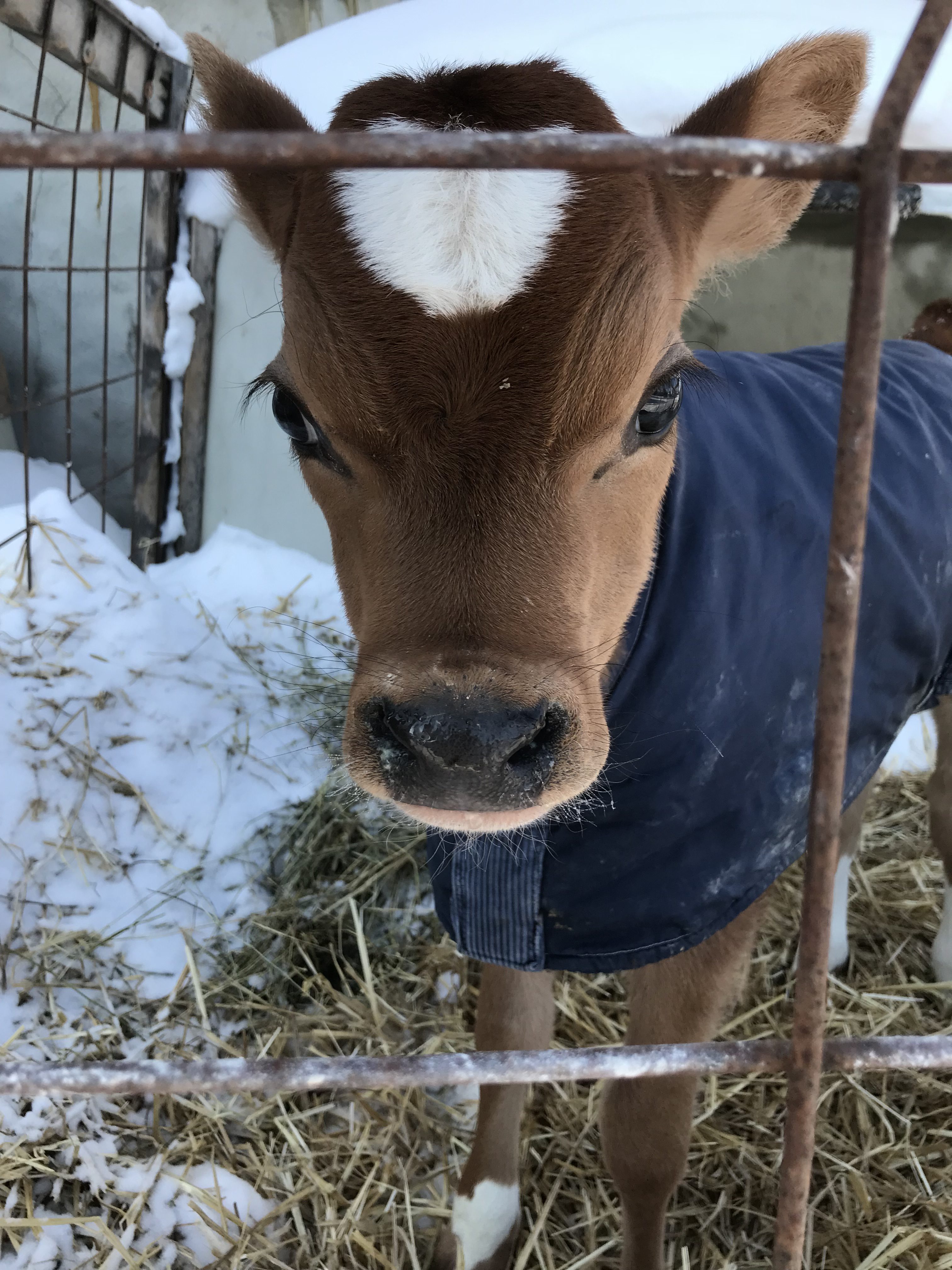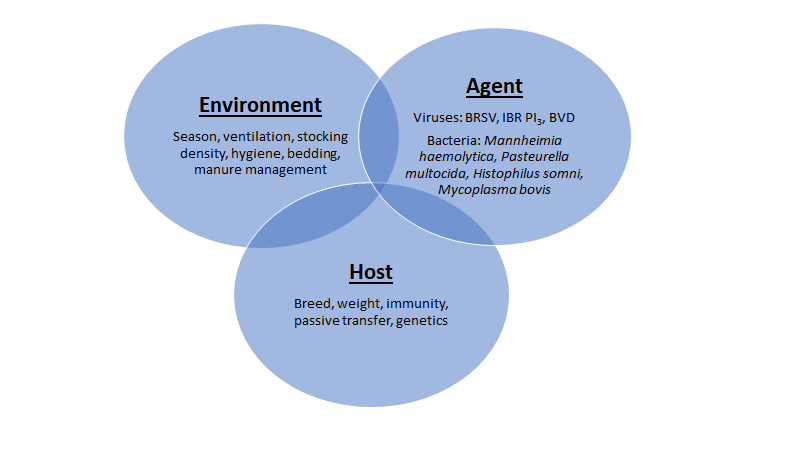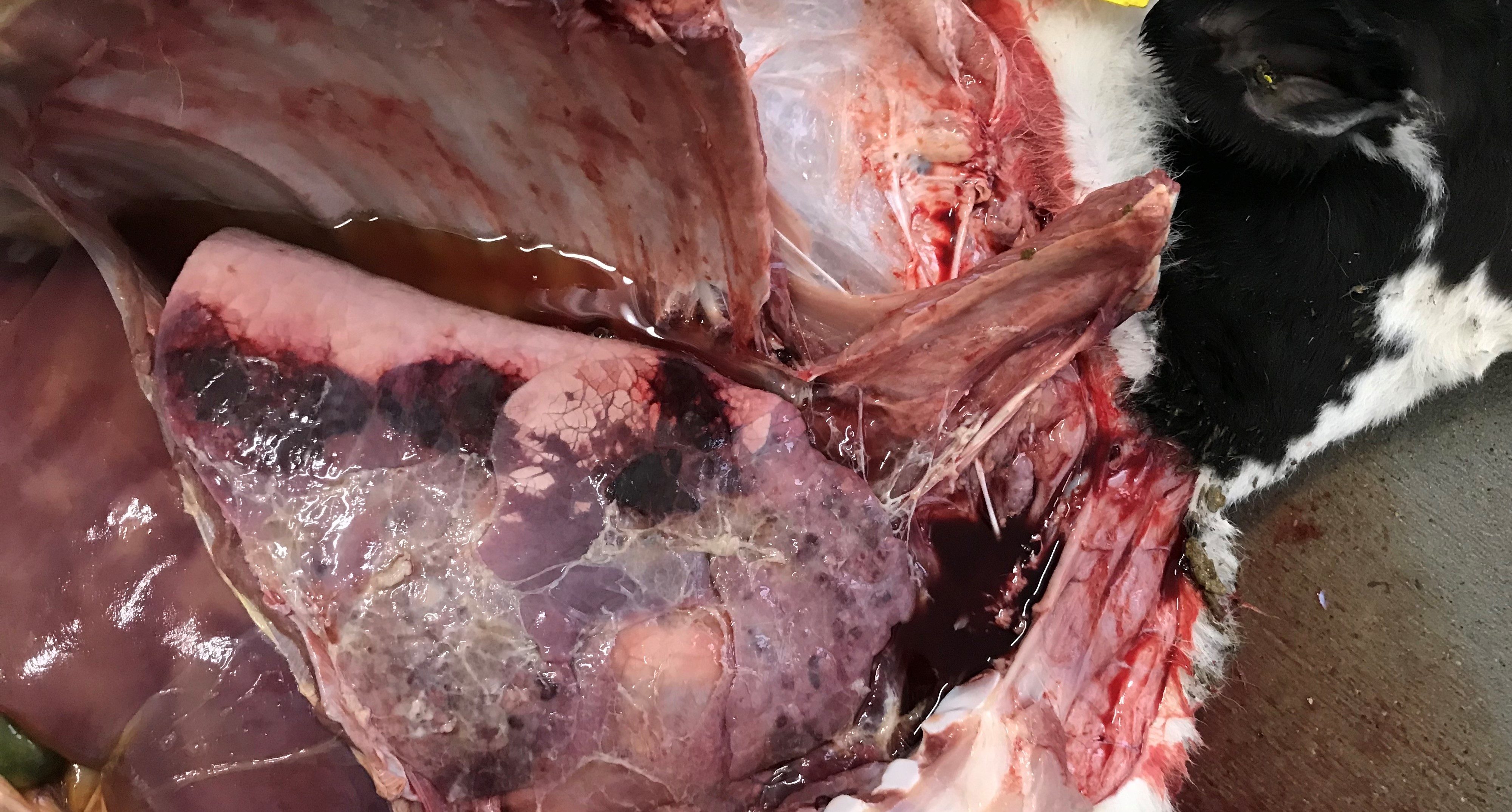Section 3 | Bovine Respiratory Disease in Veal Calves
Page 14 /
What is Causing Bovine Respiratory Disease?
Knowing how to identify and treat disease in calves will help to improve the outcome of treatment therapy.
Diarrhea and respiratory disease are two of the most common diseases that occur in veal calves.
To learn more about how to identify and treat calves with diarrhea, check out the following:
The remainder of this section will cover bovine respiratory disease (BRD), with a specific focus on challenges veal calves face with respect to housing and immunity.

Source: ACER Consulting Ltd.
What is Causing Bovine Respiratory Disease?
Respiratory disease often results from several factors interacting. As the figure below suggests, disease results due to a combination of environment, agent (or pathogen), and host (or calf) factors.
If all the factors are present, disease occurs. If an element is missing, disease may not occur. This is why it is so important for us to understand how the host, agent, and environment work together; this knowledge can help us break the cycle!
What are the Common Pathogens Responsible for Causing Respiratory Disease?

Viruses
Some common viruses responsible for causing BRD include:
- Infectious bovine rhinotracheitis (IBR)
- Bovine parainfluenza 3 (PI3)
- Bovine respiratory syncytial virus (BRSV)
- Bovine viral diarrhea virus (BVDV)
- Possibly bovine coronavirus
These viruses cause damage to respiratory tract defenses and results in inflammation. In addition to causing severe disease on their own, viral infections can also promote secondary bacterial infections.
Bacteria
Bacteria that can cause BRD include:
- Mannheimia haemolytica
- Pasteurella multocida
- Histophilus somni
- Mycoplasma bovis

Source: ACER Consulting Ltd.
Many of these bacteria can be found in healthy cattle in the upper portion of their respiratory tracts. To establish an infection, they need to travel lower in the respiratory tract to get to the lungs. When defenses are weakened (which might happen due to viral infections, stress, nutrient changes, or environmental conditions), bacteria can travel lower down into the respiratory tract and cause infection. Once a bacterial infection is established, bacteria can cause massive inflammation and damage to the lungs, and can be very difficult to treat.
Check out this link to a short video on How Pathogens Cause BRD.